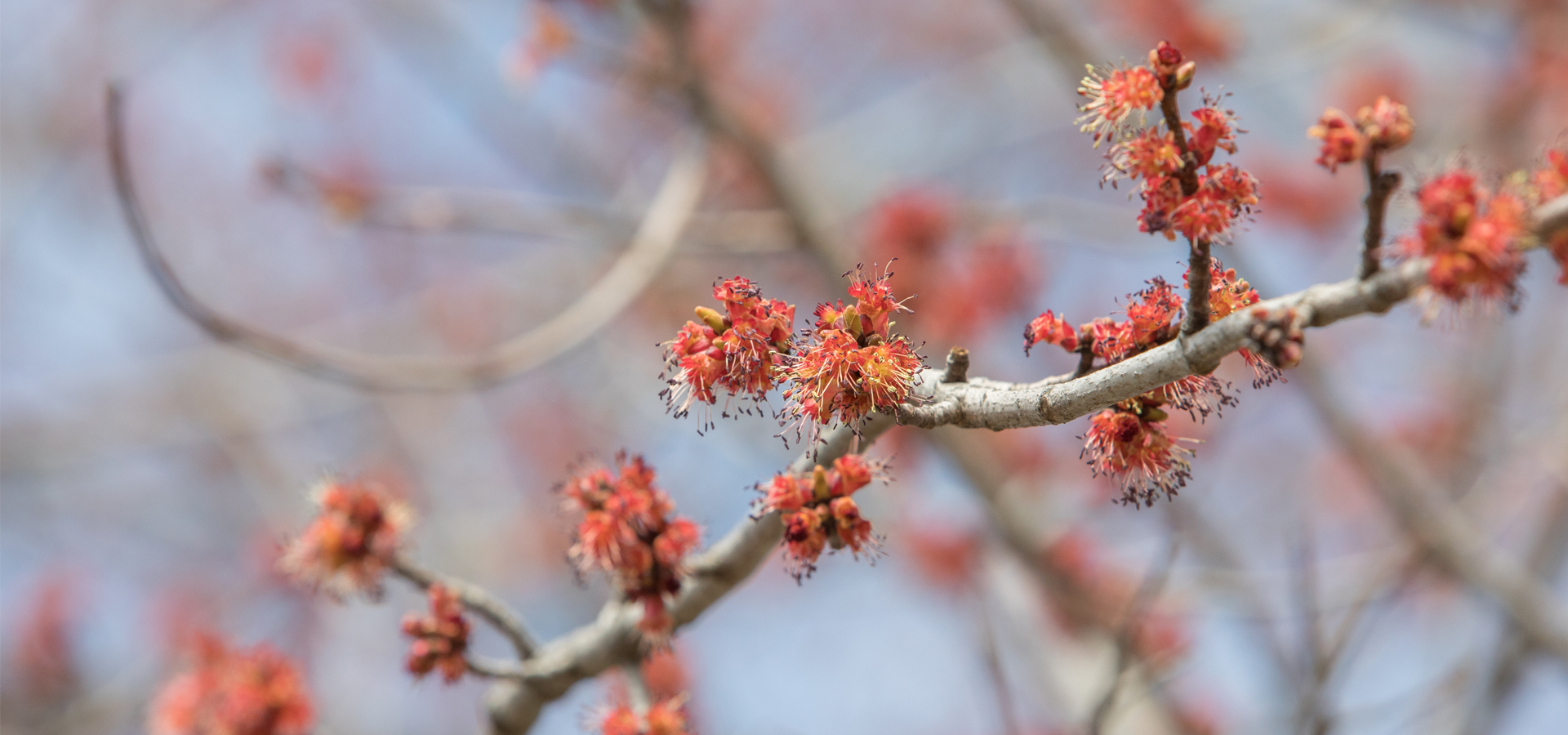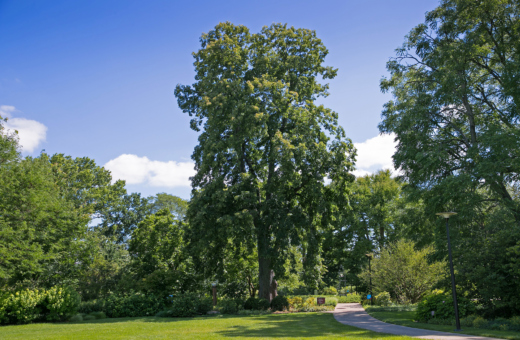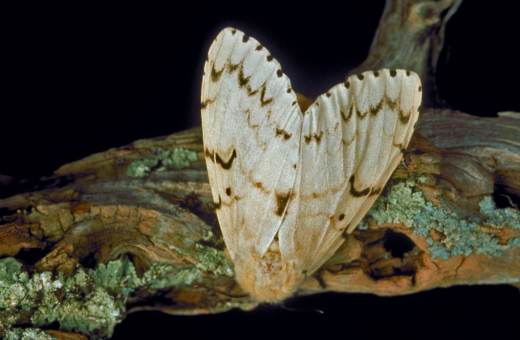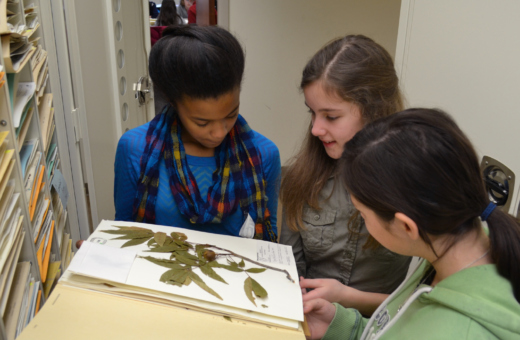Overview
If you take a walk in the woods at The Morton Arboretum, even on the grayest day in late February or early March, look closely around you and you’ll start to see signs of spring. The exact timing is impossible to predict, because the weather varies every year. But when you visit the woods and see fuzzy buds on a magnolia tree or hear the singing of a peeper frog, you’ll know that sunshine and warm weather are on the way.
Buds swell. The leaves and flowers of many trees and shrubs got a jump start on spring last fall, when they formed inside buds. Within these buds, the developing foliage and blossoms are tightly packed, like a crinkled-up tissue, and protected against the cold by closely fitting husks called bud scales or, in the case of magnolia trees, cozy furry coats. During this time, the buds are beginning to swell as those leaves and flowers get ready to burst out.
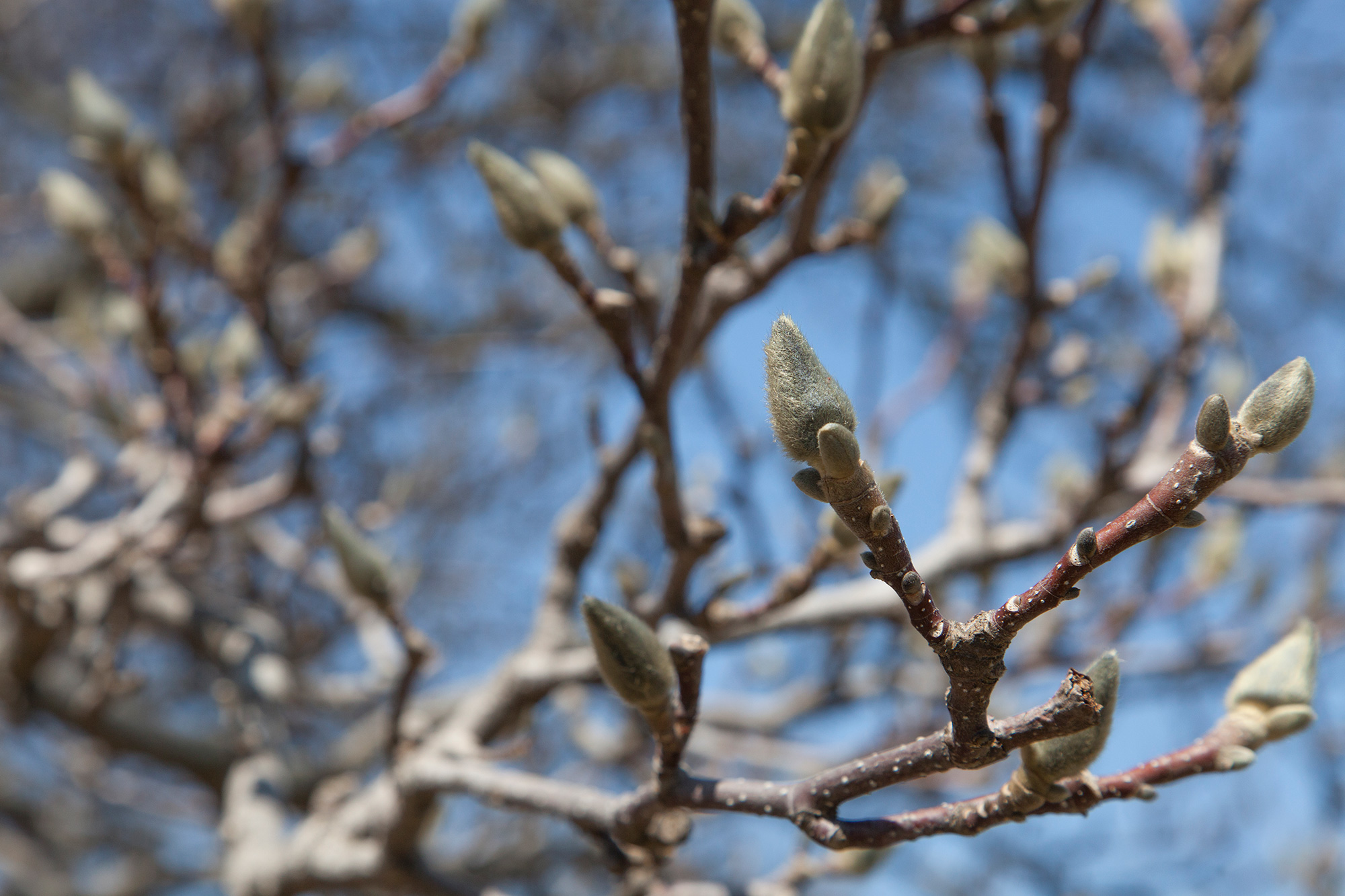
Fuzzy magnolia buds swell as they prepare to open and flower in spring.
What tells a plant it’s time to open its buds in spring? It’s different for every species, but usually it’s a complex interaction between warmer temperatures and longer days.
That increase in temperature and sunlight signals the plant to produce hormones that trigger buds to start growing rapidly. Water rises from the roots to fill all the new cells, pumping the buds up like water balloons. In spring the bud scales slowly open, and eventually, when it’s warm enough, a leaf or flower will unfold into the sunlight.
Wood ducks mate. In late winter, on the Arboretum’s lakes and ponds near the woods, you may see an especially dandified bird: the male wood duck. He’s hard to miss with an iridescent green head adorned with a crest and white racing stripes, a reddish bill, a white throat, a chestnut breast, and vivid red eyes. His mate, in contrast, with a subtle gray-brown, will be somewhere nearby and harder to spot.
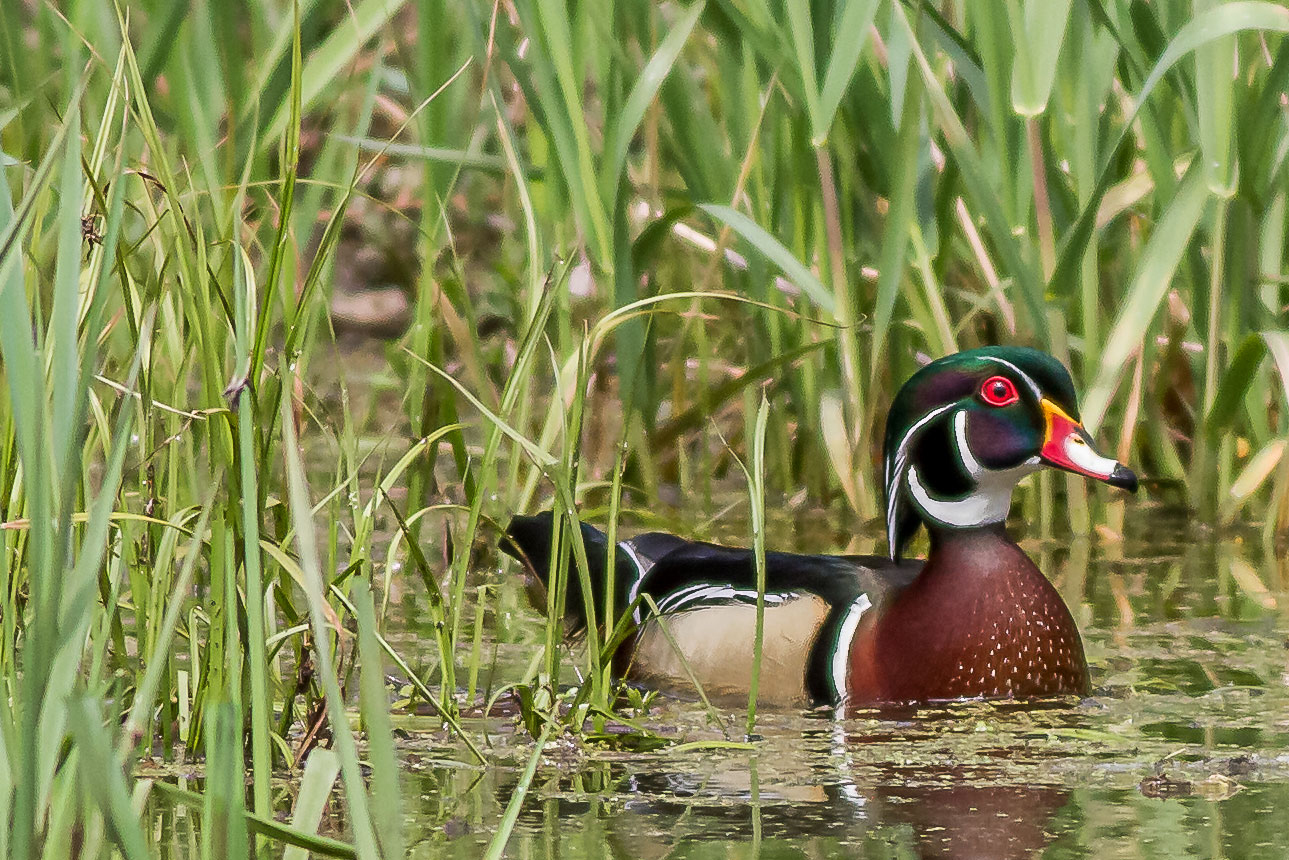
A male wood duck swims in a marsh.
The pair will have migrated from the southern U.S. to seek out a cozy nest in a cavity high in a tree. There they will hatch a brood of up to a dozen ducklings. Within a day after the ducklings hatch, they will cannonball one by one out of their hole in the tree down into soft leaf litter or water, and begin their paddling lives.
Wood ducks, like the slightly larger mallard ducks that also are common at the Arboretum, are dabbling ducks. That is, they don’t dive, but rather tip their rear ends into the air so they can nibble plants or insects from the pond bottom in shallow water.
Witch-hazel blooms. A small tree in bloom can be a head-turning sight on a cold day. Sparkly little yellow-and-red flowers, with petals like tiny ribbons, flutter along the branches of vernal witch-hazel (Hamamelis vernalis) sometime in February or March.
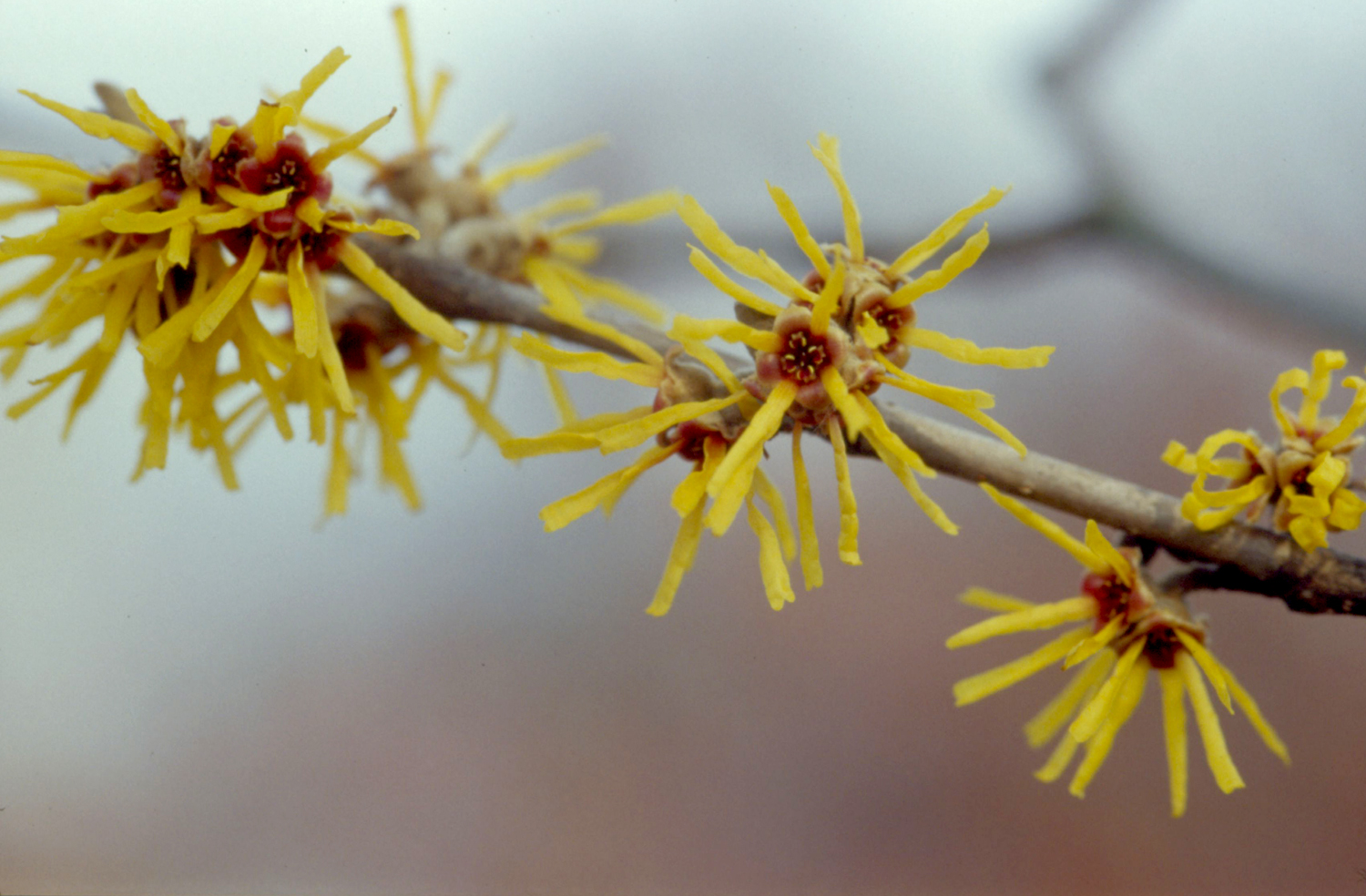
Yellow witch-hazel flowers blooming in early spring.
Look for its flowers in Witch-Hazel Dell, along the northbound trail by Parking Lot 27, just north of Lake Marmo.
Vernal witch-hazel is native to the Ozark Mountains in Oklahoma, Arkansas, and Missouri. It’s closely related to the slightly larger common witch-hazel tree (Hamamelis virginiana), native to the Chicago region. That tree has yellow blooms in late fall, rather than late winter. There are also hybrid witch-hazels in the Dell that bloom in early spring.
Why would these plants flower at such cold times of the year? Scientists say they are avoiding competition for the attention of pollinating insects to help them reproduce. There may not be many bees and flies in October or January, but there are some, and they have few other nectar sources. For example, vernal witch-hazel is pollinated by a special group of owlet moths that can warm themselves by shivering as they fly through the cold air in search of food.
Oh, and the tree’s name has nothing to do with black hats or hexes. It has been traced to an old Anglo-Saxon word meaning weak or bendy. Native Americans and early settlers would use a pliant branch of witch-hazel for water witching or dowsing, in the belief that it would bend toward an underground water source.
Skunk cabbage appears. The earliest native wildflower to bloom at the Arboretum may not be what the word “wildflower” brings to mind.
Big, fleshy, smooth, pointed modified leaves, maroon with white speckles, poke up, often through the snow, to shelter a clump of tiny flowers. Skunk cabbage (Symplocarpus foetidus) is a striking sight, but its most distinctive quality is its strong odor—unappealing to most humans but inviting to the carrion flies the plant depends upon for pollination.
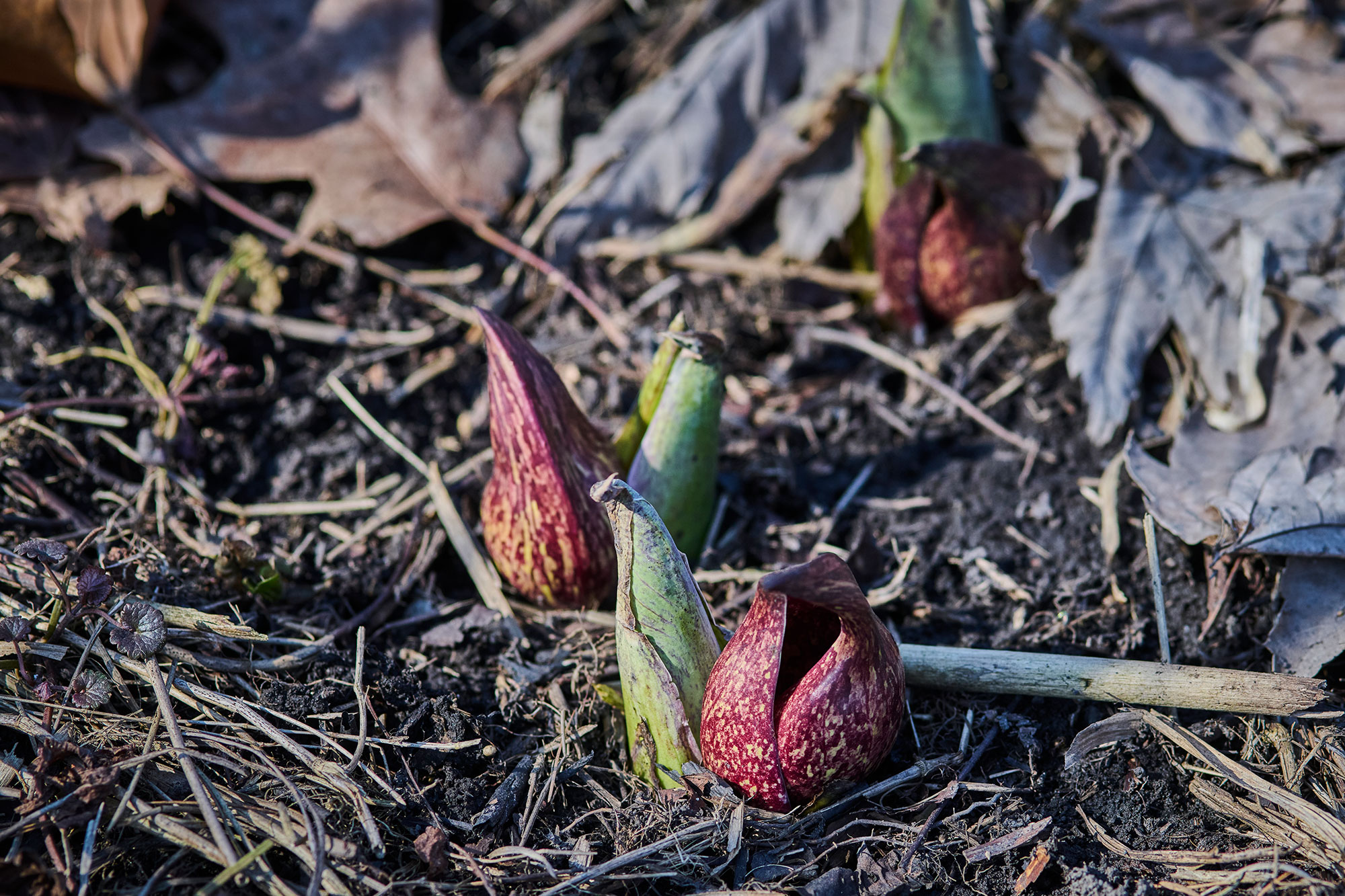
Skunk cabbage emerging in early spring.
Skunk cabbage often begins flowering in early March, depending on the year. It has an unusual ability to generate its own heat to melt its way through frozen soil. A plant of shady, moist places, it blooms at the Arboretum by the spillway at the west end of Lake Marmo, near Parking Lot 28.
Trees flower. When you see the first tint of fresh green or pale pink in the treetops, it won’t be leaves. It will be flowers.
The blooms of oaks, elms, willows, and maples are barely there, compared to the eye-catching flowers of a magnolia or a daffodil. That’s because many trees depend on the wind, not insects, for pollination.
Big, colorful flowers are advertising: They hawk the plants’ nectar to visiting insects in exchange for giving pollen a ride to the flowers of another plant.
But the pollen of many trees is fine enough to be wafted from a male flower to a female flower through the breeze. Since the wind is indifferent to advertising, these trees can have small, inconspicuous flowers.
Wind-pollinated trees usually bloom early, before their leaf buds open, so there won’t be leaves to block the wind or interfere with the floating pollen. That’s why that subtle green or pink mist above our heads is one of the first signs of spring.
Frogs sing. Sometime in early March, you’re likely to start hearing a high-pitched sound in the wetlands and wet woodlands of The Morton Arboretum. It’s the mating call of a spring peeper—a tiny frog, about an inch long, that lives near the lakes and marshes.
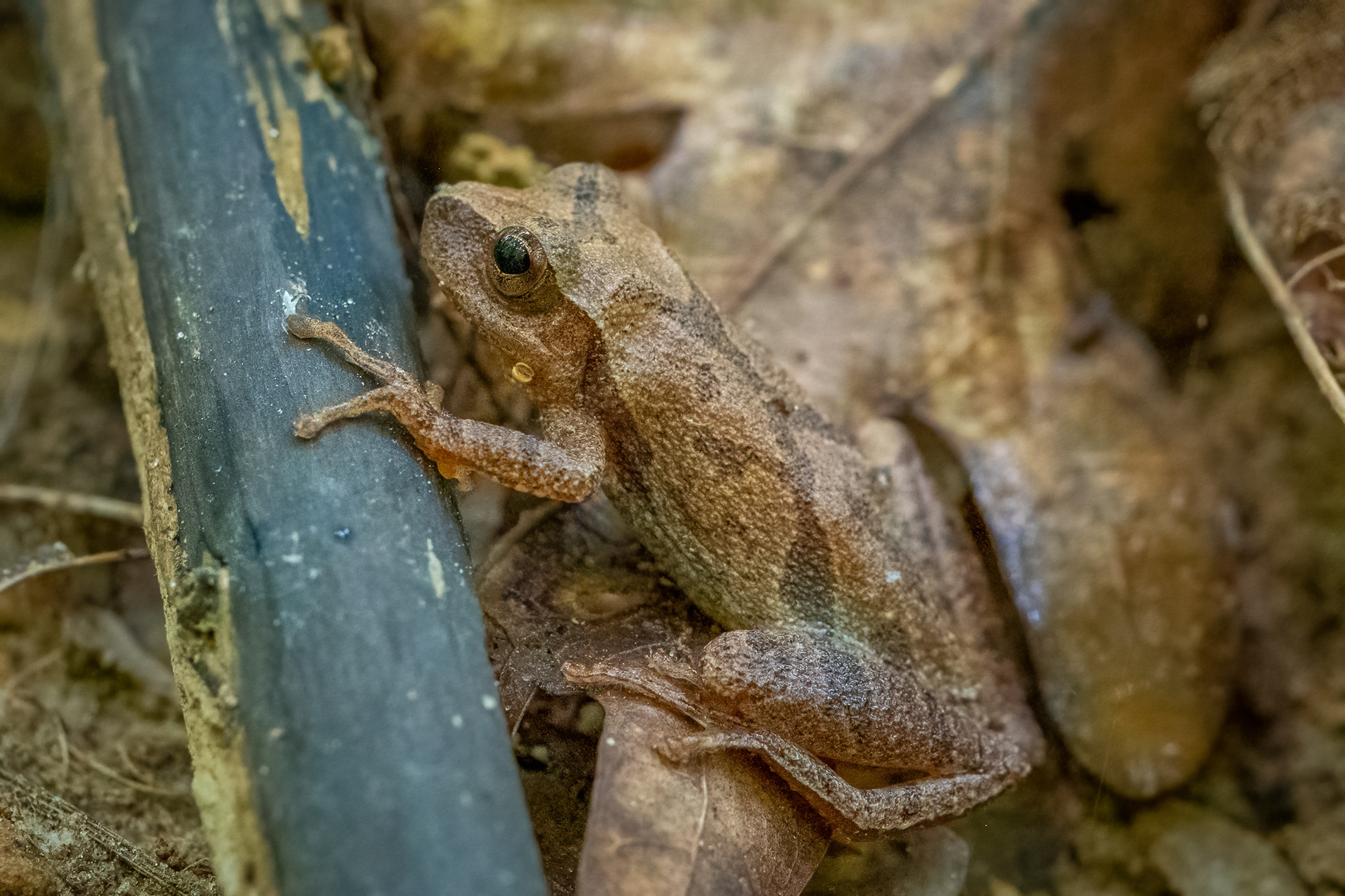
A spring peeper rests on a leaf.
Like many frogs, peepers spend the winter partly frozen. When they warm up in spring, they start looking for love.
How does a frog find a mate? He sings. To amplify the sound, he inflates his throat with air until the skin stretches like a balloon, and then cuts loose with a song that may carry for a mile.
By mid-March, the cheeps of spring peepers will combine into a high-pitched, pulsing wall of sound. Gray tree frogs chatter like little monkeys. American toads trill. And the high-pitched whirring like summer cicadas? Those are western chorus frogs.
Once they’ve mated, female frogs and toads will lay eggs in the water. The eggs hatch into tadpoles, like the toad tadpoles of Wonder Pond in the Children’s Garden. Gradually, the tadpoles become grown-up toads and frogs that will be ready for the chorus of the following spring.
